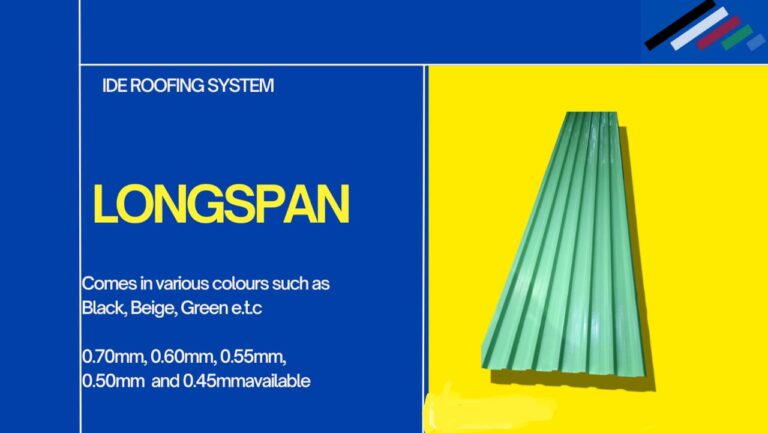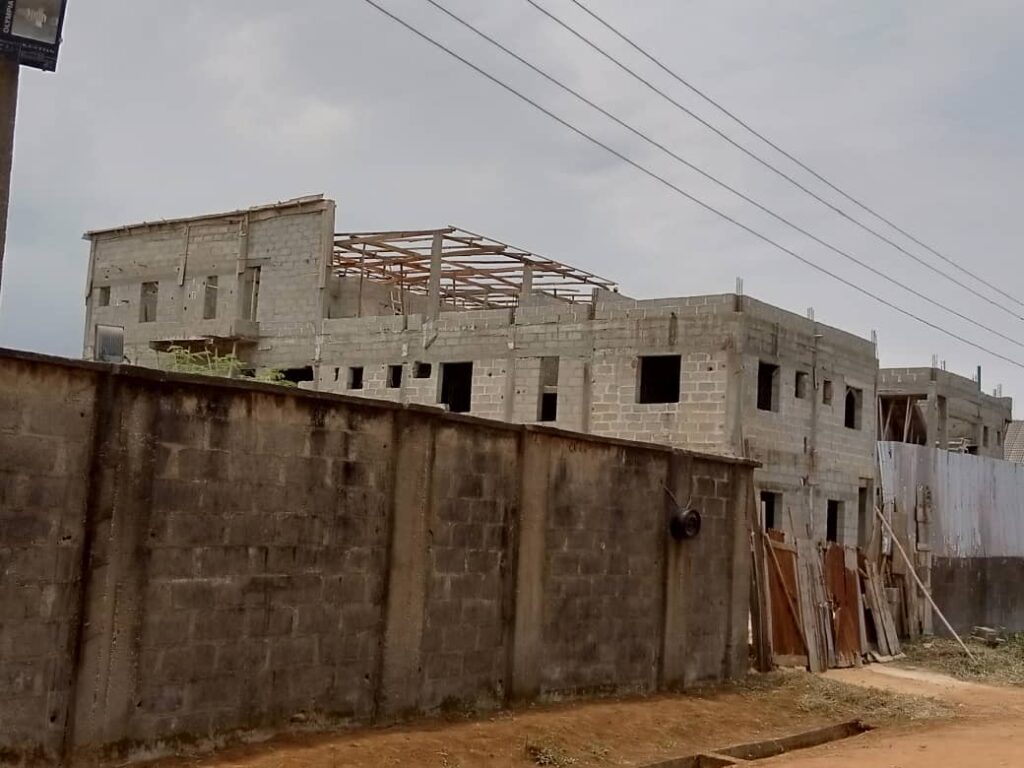In recent years, flat/hidden roof designs (also called arabian roofs or secret roofs) have surged in popularity across Nigeria, driven by a combination of practical benefits. Foremost among these is their cost-effectiveness, making them a preferred choice for homeowners seeking both functionality and affordability.
Another compelling advantage is their seamless compatibility with solar panels. As more Nigerians embrace renewable energy, flat roofs provide the ideal surface for efficient solar installations, maximizing energy generation while maintaining sleek aesthetics.
If not done right, flat roofs can become a headache. With issues like leaks, water pooling and costly repairs, we find it essential to guide our prospective clients through the crucial Dos and Don’ts of building a durable, efficient, and well-structured flat roof.
Essential Dos of Flat Roof construction
1. Add a gentle Slope for Drainage:
Even though it is called a “flat/hidden” roof, it should not be designed to be completely flat. Constructing flat roofs without the use of slope could lead to ponding which can lead to leaks.
Always work with your Engineers and Carpenters to ensure proper slope for your building. This is in fact the most important Do to consider.
The introductory video above highlights this.
2. Invest in Waterproofing:
One of the most important aspects of building a flat roof is ensuring proper waterproofing. You may have heard people say that flat roofs aren’t worth the hassle because they tend to develop leaks over time.
More often than not, these issues arise because homeowners disregard professional advice on waterproofing, leading to costly and frustrating repairs down the line.
There are two primary waterproofing techniques: Felting and Aluminium covering. The video below shows the use of felt rubber for hidden roof while the one above shows the use of aluminium cover.
3. favour aluminium longspan:
Although aluminium roofing sheets come in various designs—steptiles, metrocopo, and longspan—it is important to prioritize the longspan design due to its wider gutters, which allow for proper water runoff.
Also, aluminium resists corrosion better in humid environment and is considered the best choice for constructing flat roofs in Nigeria.

4. Plan for regular Maintenance:
Flat roofs require consistent upkeep to remain functional. Schedule biannual inspections, especially before and after the rainy season, to check for cracks, leaks, or debris buildup.
Hire experienced contractors for repairs to ensure quality and prevent costly mistakes. Proactive maintenance can extend your roof’s lifespan significantly.
5. Ensure Proper Consultation
It is important to be in constant talks with your roofing company and strutural engineer at all time during the roofing stage of your building.
If you have intentions of using solar panels at any stage of the roofing, proper discussions and consultations should be applied to prevent leaks.
Don'ts of Flat/Hidden Roof construction
1. Do not Use stone-coated Roofing Sheets on Flat Roofs
Since stone-coated roofing sheets in Nigeria are significantly cheaper than their aluminium counterparts, many homeowners have started using stone tiles (Gerard) for flat/hidden roofs.
However, just this year, we have replaced more than seven flat roofs that were originally roofed with stone-coated tiles, after homeowners reported persistent leakages.
No matter the type or brand of stone-coated roofing sheets, they inevitably lead to leaks. This is why we consistently advise future clients against using them for flat roof construction.
2. Do not underestimate cost
While flat/hidden roofs may have lower initial costs than pitched roofs, maintenance and repair expenses can add up if not properly designed.
Don’t cut corners on materials or labor to save money upfront, as this often leads to frequent repairs and a shorter roof lifespan
3. Do not Use Lightweight Materials
PLEASE DO NOT USE LIGHTWEIGHT MATERIALS FOR HIDDEN ROOFS!!!
Especially if you are looking at using solar panels on the roof. I will encourage the use of 0.60mm or 0.70mm if you can afford it.
Lightweight materials will not only leak, they also look very messy and rough. Stronger materials are generally rcommended.
4. Do Not Ignore drainage needs
Rain gutters and water collectors play a crucial role in directing water flow during rainfall. Homeowners should not overlook their importance and should invest in quality gutters to protect their property from water damage.
5. Do Not Compromise on waterproofing
Lastly, felts or aluminium covers are crucial materials used for waterproofing. If your hidden roof has a roof-to-wall intersection, this is non-negotiable.
In conclusion, flat/hidden roof construction in Nigeria offers immense potential for modern, functional buildings, but success relies on quality aluminium roofing materials, professional installation plus advise, and regular maintenance.
By following these do’s and don’ts, you can create a flat roof that withstands Nigeria’s challenging climate while enhancing your property’s value and sustainability.
Always work with certified professionals, and invest in durable solutions to ensure your flat/hidden
roof remains a reliable asset for years to come.
Ready to start your flat roof project? Consult with us now by clicking on the Whatsapp icon on the bottom right corner of your device
For more tips on construction and sustainable roofing practices in Nigeria, stay tuned to our blog!




